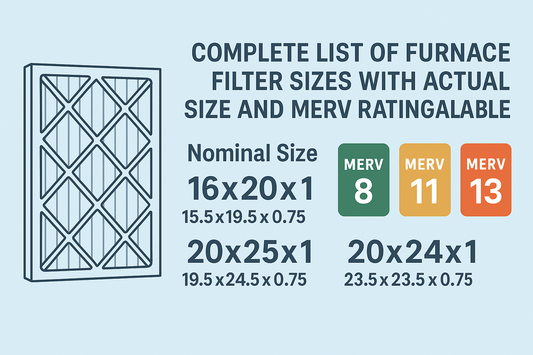News

Resolve PGAPXCAR2025 Error code 2 flashes DGAPA...
Error Code New PGAPXCAR2025-A02 Filter on DGAPAXX Cabinets This can happen with both the OEM and compatibles on these 2 sizes. Here are 2 common issues that cause this error...
Resolve PGAPXCAR2025 Error code 2 flashes DGAPA...
Error Code New PGAPXCAR2025-A02 Filter on DGAPAXX Cabinets This can happen with both the OEM and compatibles on these 2 sizes. Here are 2 common issues that cause this error...

Why MERV 8 Should Be Your Minimum Air Filter | ...
The question isn't whether dust mites are in your home—they almost certainly are. The question is: **what are you doing to protect yourself and your family from them?** ## What...
Why MERV 8 Should Be Your Minimum Air Filter | ...
The question isn't whether dust mites are in your home—they almost certainly are. The question is: **what are you doing to protect yourself and your family from them?** ## What...

Hayward Pool Filter Replacement Guide 2025 | Co...
⚡ SAME DAY SHIPPING on orders placed before 11:30 AM EST! Ultimate Hayward Pool Filter Replacement Guide (2025) Complete 43-Model Cross-Reference • Pleatco • Unicel • Filbur Shop All Hayward...
Hayward Pool Filter Replacement Guide 2025 | Co...
⚡ SAME DAY SHIPPING on orders placed before 11:30 AM EST! Ultimate Hayward Pool Filter Replacement Guide (2025) Complete 43-Model Cross-Reference • Pleatco • Unicel • Filbur Shop All Hayward...

Complete MERV Filter Comparison Chart
🔬 Understanding MERV Ratings MERV ratings range from 1-16 for standard filters, with higher numbers indicating better filtration of smaller particles. The rating is based on a filter's ability to...
Complete MERV Filter Comparison Chart
🔬 Understanding MERV Ratings MERV ratings range from 1-16 for standard filters, with higher numbers indicating better filtration of smaller particles. The rating is based on a filter's ability to...

MERV 8 vs MERV 11 vs MERV 13 Air Filters: Compl...
MERV 8 vs MERV 11 vs MERV 13 Air Filters: Complete Comparison Guide Choosing the right air filter for your HVAC system can significantly impact your indoor air quality, energy...
MERV 8 vs MERV 11 vs MERV 13 Air Filters: Compl...
MERV 8 vs MERV 11 vs MERV 13 Air Filters: Complete Comparison Guide Choosing the right air filter for your HVAC system can significantly impact your indoor air quality, energy...

20x20x1 MERV 8 vs 11 vs 13 Air Filters – Comple...
MERV 8 vs MERV 11 vs MERV 13: Complete Guide for 20x20x1 Air Filters If you're shopping for 20x20x1 air filters, understanding the differences between MERV 8, MERV 11, and...
20x20x1 MERV 8 vs 11 vs 13 Air Filters – Comple...
MERV 8 vs MERV 11 vs MERV 13: Complete Guide for 20x20x1 Air Filters If you're shopping for 20x20x1 air filters, understanding the differences between MERV 8, MERV 11, and...
